Ultimate Candles In 2009 we searched for a way to reliably keep candles lit in unpredictable wind and/or snowfall and rain conditions. That meant devising a closed top ~ a lantern-like design. Here's how we did it... |
|
 |
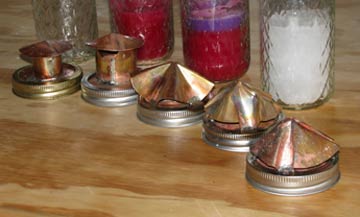 |
| We started with tall, 12 ounce mason jars. First, we molded candles directly in the jars, using conventional wicking (wire-core type) and candle wax. | Then we experimented with many designs for the closed chimney-top. We tested each with wind and water. Above Right, emerged as our most successful design. |
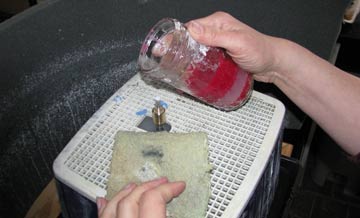 |
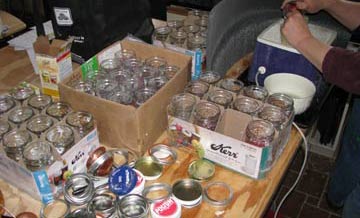 |
| We observed that the candles never burned vigourously if the only source of combustion air was 'shared' with the flue air. | So we drilled three additional vent holes through the sides of each jar using a diamond glass grinder. |
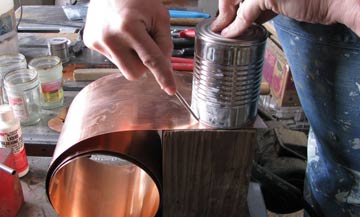 |
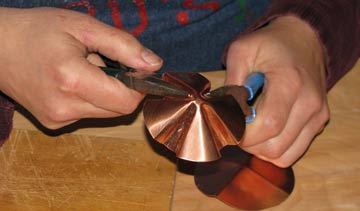 |
| We cut new lids for each jar; we chose copper for it's ease of soldering, but we retained the standard mason bands to thread onto the jars. | Dr. Thering, inventor of the "Thering Fold", handcrafted some 50 chimney-tops. The design minimizes the wind and water entering, while allowing free flue exhaust. |
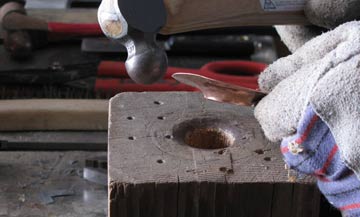 |
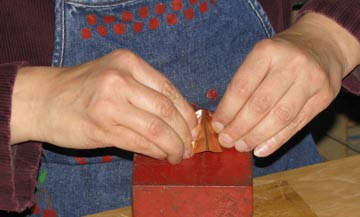 |
| To avoid water dripping into the jar, we raised a shallow cone shape around the flue hole in the center of each copper lid, using a swage block and ball-peen hammer. | Each chimney-top needed to be carefully squared-up so that it fit flat, with four flutes tight in contact with the lid, ready to solder. |
 |
 |
| Self-cleaning liquid flux allowed us avoid the extra hassle of needing to scour all the parts. | The bands held the lids perfectly flat during soldering, to ensure a good, water-repelling seal to the candle jar. |
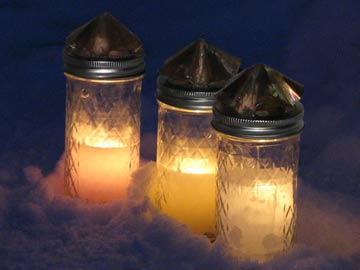 |
|
The resulting candle-lanterns have proven themselves, burning bright for hours in falling rain and blowing snow. |
|
A short video showing the new luminarias at the Winter Solstice bonfire of 2009 on Madison's East Side... |
|
|
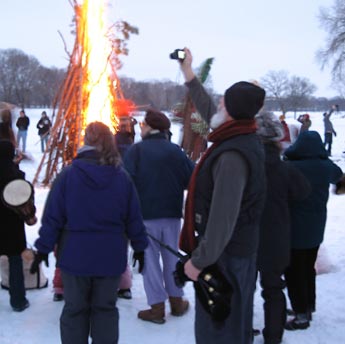 |
 Comments? lou@designcoalition.org
Comments? lou@designcoalition.org